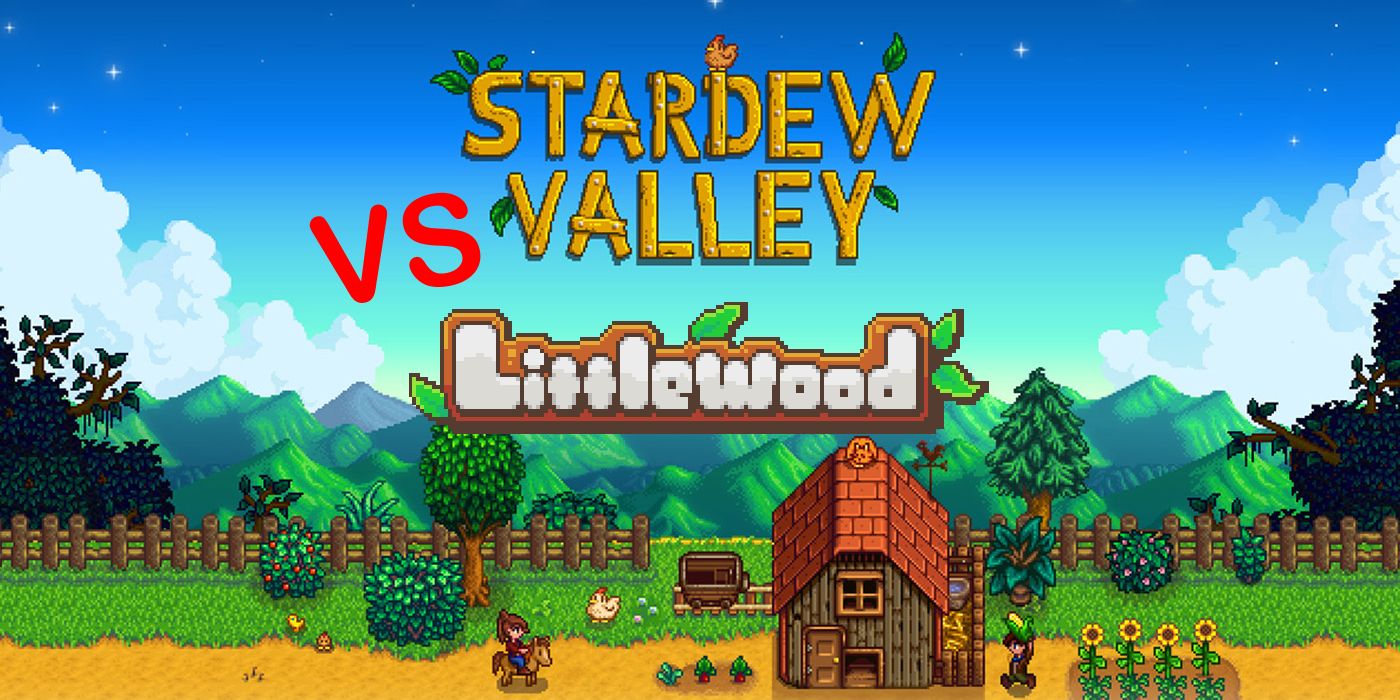Building a farm in games like Stardew Valley can be a way for players to relax and connect with nature. Fans of farming sims can spend their time solving puzzles, growing crops, or grooming their cute, pixelated livestock. However, Stardew Valley has a few setbacks that later titles of the genre like Littlewood have tackled, giving players an even more immersive and exciting slice-of-life experience.
Littlewood released for early access on Steam in 2019, three years after Stardew Valley's initial debut. While both games have undergone big changes, with Stardew Valley expanding its base content with update patches, and Littlewood celebrating its full release in 2020, Littlewood may have come out the stronger title. Stardew Valley set a standard for the farm-simulator genre, but has struggles with slow gameplay when players are first getting started. This issue has not been addressed despite numerous patches. Littlewood manages to overcome the slow start issues by immediately giving players access to farming, mining, town management, and numerous quests. These options help suck players into the game almost instantly.
While Stardew Valley encourages players to build large farms, Littlewood makes farming a slightly smaller part of its daily activities. Players can still plant crops and grow fruit trees, but they have to unlock farm space in their town using upgrades at the town office. Littlewood compensates for its lack of sprawling farmlands by encouraging players to customize and build up their town from scratch, which fans of Animal Crossing may find pleasantly familiar. Combining these two different simulation mechanics gives Littlewood an ever-changing style of gameplay, as where Stardew Valley can sometimes become repetitive.
Littlewood's Mechanics Prevent Repetitive Gameplay
One of the best improvements that Littlewood introduces is the ability to rearrange the player's town from day one. There are no penalties to the player if they want to move buildings they have already built, completely rearrange trees and crops, or even change the way the water and hills look around their town. Players have complete creative freedom over their land, and can sculpt it to fit whatever designs they like. Stardew Valley has always had a difficult system for rearranging farm layouts, with the player needing to talk to Robin the carpenter to move buildings, and certain structures like the greenhouse and the player's home not being movable. Letting players arrange their space freely satisfies a creative itch that many simulation fans possess.
Stardew Valley has a general narrative that players can uncover as they go about their days as a farmer. The story is simple, and appears to be a commentary on the effects corporate powers like the Stardew Valley's evil JojaMart, and how these chain stores hurt people and small town communities. While the story is excellent, it is short and fairly simple.
Littlewood, conversely, incorporates a fantasy narrative, with the main character unraveling the events that lead to their rebuilding the town with the help of their friends. The story is rich and intriguing, and requires the player to reach out and build relationships with many different people to learn what happened. While Stardew Valley is an excellent game that has impacted multiple slice-of-life simulation games since, Littlewood takes many of these popular ideas and pushes them further, creating an engaging and adorable simulation experience.


